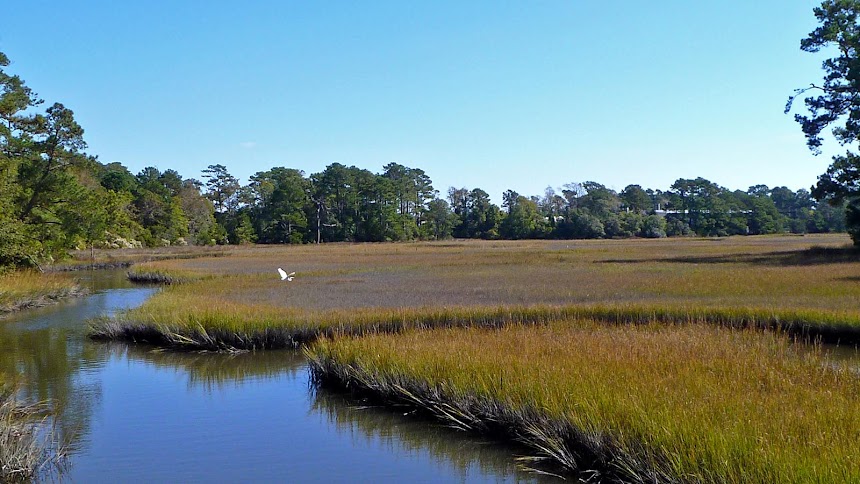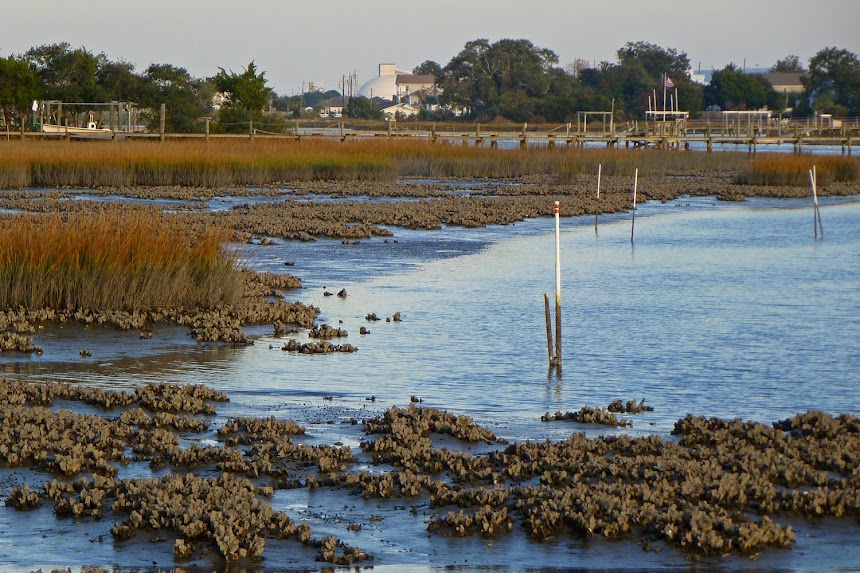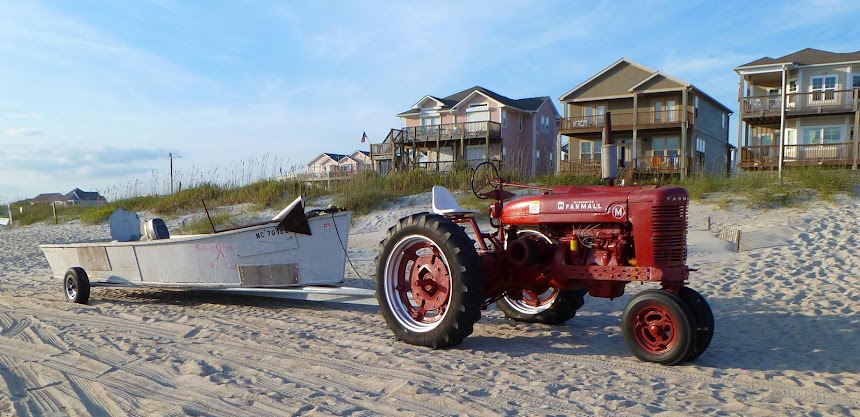In most ways, my trip back to France — my 89th Atlantic crossing since 1969 — was one of the easiest that I can remember. My drive up to Raleigh-Durham airport, which now has a daily non-stop Delta flight to Paris, was uneventful and the scenery was pretty. The check-in process at the airport took some time, because nowadays the airline's automated kiosks reject me, since at the point of departing I don't have a round-trip ticket. I have to go see an agent, which means standing in a long line as special cases like mine get authorization to board the plane. A human ticket agent has to examine my French carte de résident, and then I'm good to go. Normally, Americans are not allowed to fly to France without a round-trip ticket, and the maximum stay is 90 days unless you possess a long-term visa or a residency card.
I still had time to have a chicken Caesar salad in an airport restaurant before it was time to board the plane, which was scheduled for take-off at 5:30 p.m. and was on time. One of the best things about it all for me was that the plane was only half full. As soon as everybody was on board, I spied an empty row of seats and quickly moved myself and my carry-on bag there, leaving the two people who were sitting with me in the row I was assigned to some extra space, and giving me the luxury of being able to lie down for part of the overnight flight if I decided to. And the empty row I occupied was in what Delta called a Comfort + area of the plane, which meant I had much more legroom than in a regular economy seat. I was sittin' pretty.
The plane landed at 7:30 a.m., 15 minutes early, at Paris Charles de Gaulle airport after a smooth eight-hour flight over New England, Newfoundland, the North Atlantic, and Brittany and Normandy. Once off the plane, I walked for what seemed like a mile to get to passport control, where the immigration agent scanned my residency card but didn't even look at my passport, and on to baggage claim. Surprise of surprises, there I saw my suitcase already riding around on the conveyor belt along with half a dozen others, so I didn't have to wait 30 minutes or more for it to come out as I normally do. I sailed through customs, where nobody paid any attention to me, at about 8:15 a.m.
Since the old 10:15 a.m. high-speed TGV train from the airport directly to Tours has now been taken off the SNCF schedule, I had decided to take an RER commuter train from CDG through the middle of Paris and on to a station about 15 miles south of the city, where Walt would come and pick me up. That seemed like a better plan than hauling my heavy bags to a train station in central Paris and waiting hours there for a train to Blois. The only other solution was to stay at the airport and take the afternoon TGV to Tours, which was scheduled to depart at 2:15 p.m. I didn't relish the prospect of spending six hours hanging around in the airport waiting for that train.
There were RER (Réseau Express Régional) commuter trains scheduled to leave every 15 minutes starting at 8:45 a.m. for the 90 minute journey down to the Gare du Guichet in the suburb of Orsay. The RER trains leave from the same station as the TGV trains in CDG terminal 2. I went there and tried to buy a ticket from a machine for the train to the Gare du Guichet in Orsay, but the Gare du Guichet didn't appear on the list of stations served by the RER. It must be too small. I had to go to a ticket office with human agents and buy my ticket there (it cost 14 euros). I rode an escalator down to the departure platform at about 8:50 a.m., thinking I'd get on the 9 o'clock train and arrive in Orsay at about 10:30.
I was surprised to see an RER train sitting in the station with people on it. The list of stations where it was scheduled to stop included the Gare du Guichet. Oh, it must be the 8:45 train running a little late, I thought, so I got on, found a seat, and waited. After a few minutes, a woman's voice on the station's public address system announced that trains were immobilized in RER stations all around the region right then because of an electrical problem, and nobody knew how long it would take to get it fixed. All we could do was wait. More and more people were getting on the train.
Finally, at about 9:20, the woman's voice came back on the PA system and announced that the electrical problem wouldn't be resolved before 11 a.m. She "invited" passengers to get off the train and find some other form of public transit for the trip into Paris. Hundreds of passengers disembarked and got on the escalators to go back up into the station lobby. I sat there wondering how I was ever going to be able to call Walt on the phone and tell him where I was. He had left home by then and I didn't have a cell phone with me. How would I ever be able to get to the Gare du Guichet before he gave up hope of finding me? What would Walt do when he couldn't find me? Drive back home and wait?
And then just as nearly all the passengers got off the train and disappeared up the escalators, a man's voice came on the PA system and announced that the electrical issue had been resolved. Suddenly the overhead lights in the train car came on for the first time and the train's motor started running. Attention au départ!, the voice on the PA system advised us. And off we went, leaving behind the hundreds of passengers who had just disembarked in search of other transit options.
The train ride through Paris was slow but comfortable. A lot of trains were backed up, I think, and the system must have had to have a lot of kinks worked out of it after the stoppage. There were very few passengers waiting on platforms along the way into Paris and even in the city, either because they had left to find other means of transportation for their morning commute, or because all of France is on school vacation right now. By about 11:10, I arrived at the little Gare du Guichet, where I had hoped to be by 10:30. Walt and Tasha were supposed to be waiting for me there, after a two-hour drive from Saint-Aignan.
However, there was no sign of Walt, Tasha, or our Citroën car. I walked through the little station and looked around the surrounding streets, but didn't see our car. I went back into the station and asked the woman on duty if there was a pay phone anywhere. There wasn't. (Earlier I had been unable to find a single pay phone in CDG airport. I had however been able to send an e-mail to Walt to tell him when I expected to arrive at the Le Guichet station.) I asked the station agent if she had seen a man with a small Shetland dog earlier in the morning, and she said she had not. I asked her if a man with an American accent like mine had come in and asked her about the late trains. She said no. So there I was, wondering if Walt had had an accident or a breakdown on the drive up to Orsay from Saint-Aignan, or whether he had given up on finding me and driven back home.
The station agent let me use her phone to try to call Walt, but I just got the answering service. I left a message and waited some more. It was raining outside, so I had to stay in the little train station lobby, where there was no place to sit down. Just when I was about to give up and go to a nearby café for something to eat or drink and a place to go to the bathroom (no toilets in the train station), I spied the Citroën driving by out front. I ran out and waved at Walt, ran back into the station to get my suitcase and carry-on bag, and ran back to the car. It was after 11:30.
Walt of course thought I had been waiting there for an hour or more, when I had in fact been there for less than half an hour because of the late trains. He probably thought I'd be exhausted and pretty grouchy. He hadn't heard about the electrical problems on the commuter train network. He had taken a wrong turn off the autoroute when road work and a big truck in his way had blocked his view of the signs along the road, and had had to drive a long way before he found a traffic circle where he could turn around and get back on the right road. And there he was. What a relief! I had been wondering how I would ever get home. And two hours later, we arrived and enjoyed a nice lunch of lasagna that he had taken out of the freezer, with a glass or two of wine. I went out for a walk in the vineyard with Natasha at about 4:30, and was in bed asleep by 9. Isn't France fun?



















































